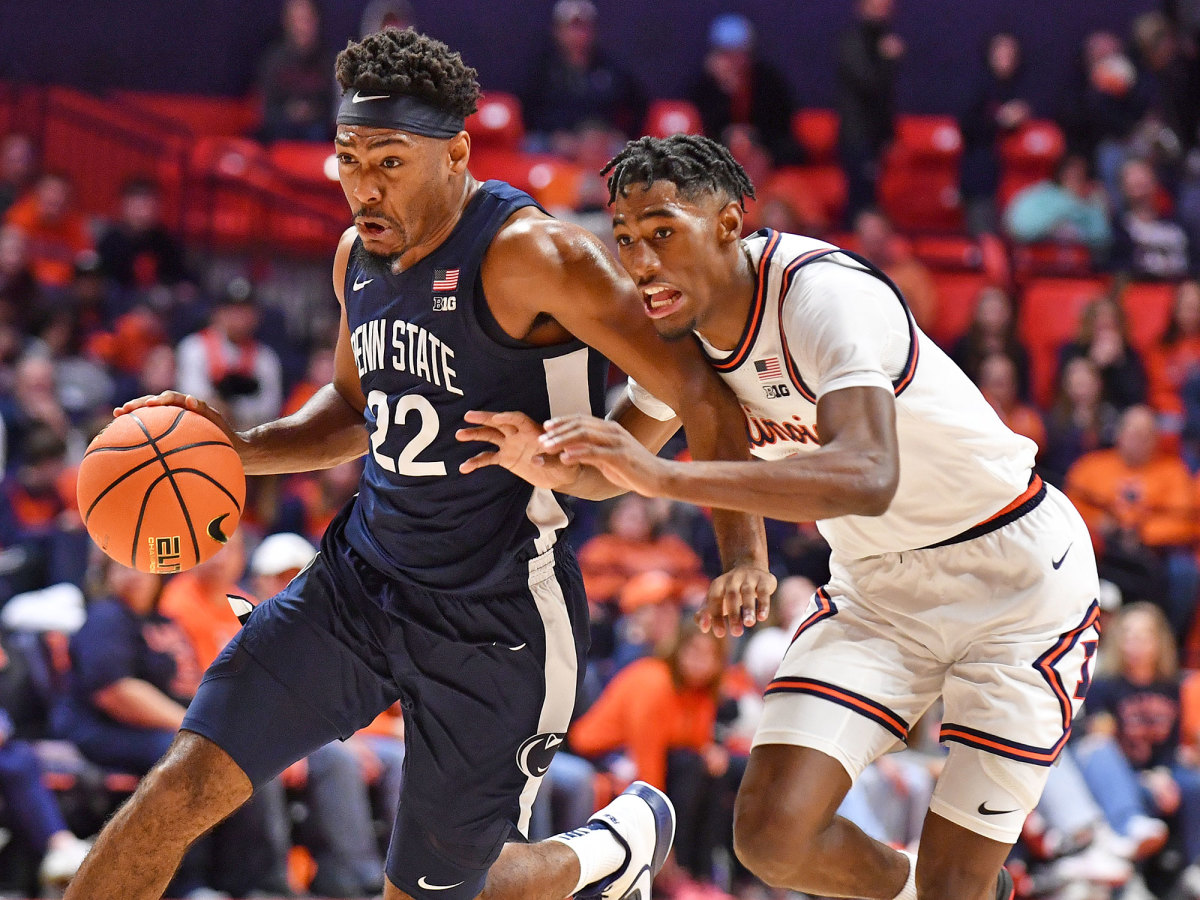The Rundown: College Basketball Should Prioritize Preserving Its Key Rivalries

Missouri students started lining up the night before and had filled the student section at Mizzou Arena 90 minutes before tip-off. They belted out “Mr. Brightside” by The Killers and shouted obscenities as Kansas players warmed up. Football coach Eliah Drinkwitz eventually joined the party and held up a “Five Level One Violations” sign, referencing the looming NCAA case against Kansas.
The Border War rivalry (now officially known as the Border Showdown) returned last season after a nearly decade-long absence. On Saturday, Kansas made its first trip to Columbia since 2012 and it brought out one of the best atmospheres of the college basketball season to date. That same day, Cincinnati hosted Xavier in an always-hostile Crosstown Shootout rivalry game, and Syracuse took on Georgetown in an old Big East battle. The next day, Seton Hall went into a sea of red at Jersey Mike’s Arena and beat Rutgers to win bragging rights in the Garden State. College basketball doesn’t have an official rivalry week, but this past weekend featured three of the sport’s great rivalries and served as a reminder of what makes it special.

“These games are generational games,” Mizzou coach Dennis Gates said postgame. “You have family, friends, loved ones circling it on calendars, making plans to get back, get in front. It was the hottest ticket in the country. I truly believe the atmosphere resembled that.”
Yet that “generational” game between Missouri and Kansas missed, well, half a generation. Outside of a charity preseason exhibition game played in 2017, these two bitter enemies didn’t face off for close to a decade after Missouri ditched Kansas and the Big 12 for the SEC in ’12. A rivalry that had been played every year since 1907 and was played through two World Wars couldn’t survive conference realignment, of all things. Reporting by CBS Sports at the time indicated that Missouri (all the way up to then Governor Jay Nixon) wanted to continue the rivalry, but Kansas did not, with Bill Self among those most outspoken about not pushing to continue the series.
“I will say this … the media is not going to dictate who we play. I’ll dictate who we play as long as I’m coaching here,” Self told the Lawrence Journal-World in 2011. “I am not going to schedule Missouri just to schedule Missouri. I’m going to schedule what’s best for us, period. That’s how it’s going to be.”
The blame game isn’t important at this point. It’s in the past now. But whoever’s to blame for the rivalry’s nine-season hiatus, I hope they took a second during Saturday’s game to realize what everyone was missing.
Games like Missouri vs. Kansas matter to people. They’re the games players remember long after their careers are over, ones that bring program greats back to campus once they’ve graduated. They’re the games fans talk about all season long, regardless of whether their team is good that year. They make students into lifelong fans and keep alumni coming back. And at a time when conference realignment has heated up again and the only thing that seems to matter to decision-makers is the value of a conference’s next media rights deal, keeping games like this going even if it’s not easy or convenient is good for college basketball and its fans.
The Border War is far from the only rivalry that realignment has wreaked havoc upon. Syracuse and Georgetown rebooted their series in 2015–16 after missing two years following the Orange’s departure from the Big East, and Syracuse hasn’t played old Big East rival UConn since ’18. The Rutgers–Seton Hall showdown mentioned earlier used to be a conference game and continued even after Rutgers left for the Big Ten, but it was on thin ice last year following disagreements about where to continue the series after the COVID-19 pandemic canceled the ’20 meeting. The list goes on and on.
Do we want to go 10 years between Oklahoma and Oklahoma State playing each other once the Sooners leave for the SEC? Wild as that may sound, Texas and Texas A&M football haven’t met since the Aggies departed for the SEC, and the men’s basketball programs have faced off just twice, both on neutral floors. Arizona and UCLA matching up has often been the best game of the season on the West Coast over the years. Is that a matchup we’re willing to let end when UCLA makes its move to the Big Ten?
More and more reasons not to play these games will keep popping up. Multiple high-major leagues have already expanded to 20 conference games. What happens when the first league jumps to 22 or 24 league games, attempting to balance out a schedule for a 16-team conference? Will rivalry games go on the chopping block? Fans may not care about preserving a few guarantee games to boost the program win total for the year, but plenty of coaches do—and schedules fill up fast, given more league games and the several challenges, tournaments and events that populate the early-season calendar. And while the realignment engine seems to have slowed down for now, things hardly feel stable. I would have once thought it unthinkable that Duke and North Carolina could one day play in different conferences. Now? Never say never.
Watch college basketball with fuboTV. Start your free trial today.
Missouri’s five previous home games before the Border War, all against low- and mid-major schools, had produced attendance figures totalling about 52% of Mizzou Arena’s capacity. Saturday’s game? A 15,061-person sellout.
These games matter, even when the Tigers are as overmatched as they were Saturday. No matter how much things keep changing in college athletics, that fact won’t. Let’s just hope we keep seeing them.

More Observations From the Week in College Basketball:
- Much was made of Brad Underwood’s “fart noise” rant after Illinois got handled at home Saturday by Penn State. The player called out in that answer, senior transfer Terrence Shannon Jr., tweeted later that day that Underwood is “the best coach in the country” and said, “He’s going to get the best out of his players at all times.” We’ll see whether there are any hard feelings there not evident in a tweet, but I wouldn’t want to be the next team that has to face the Illini.
- Speaking of that game, it was a signature win for Penn State in Micah Shrewsberry’s second season. Shrewsberry’s offense is a joy to watch, and point guard Jalen Pickett is one of the best guards in college basketball. The Nittany Lions’ lack of size is a problem, but their shooting creates some very tricky matchups for opposing coaches. This team could well end up in the NCAA tournament mix.
- Alabama’s freshmen popped when I saw the Crimson Tide at PK85 in November, but they had their true coming-out party Saturday in an upset win over No. 1 Houston. Twenty-nine of the Tide’s 44 points in the second half were scored by freshmen, a number made even more impressive when considering that projected lottery pick Brandon Miller didn’t make a field goal in the game. An emerging star: Noah Clowney, a skilled 6'10" forward who was arguably the best player on the floor. A team this young to being this good, this fast, should scare the rest of the SEC.
- It does feel like the SEC has entered something of a bizarro world. Kentucky, forever the one-and-done capital of college basketball, is starting four transfers and one freshman in Cason Wallace. Meanwhile, Alabama and Arkansas (three freshman starters, all of whom were McDonald’s All-Americans) are leaning into a model more similar to what John Calipari deployed earlier in his tenure with the Wildcats.
- It’s time to start talking about Virginia Tech as a legitimate title contender in the ACC. A big reason? The play of sophomore point guard Sean Pedulla, who has exploded onto the scene to average nearly 17 points and four assists per game, up from 5.4 ppg as a freshman. The Hokies also boast the nation’s third-lowest turnover rate, in no small part due to Pedulla’s work running the team.
